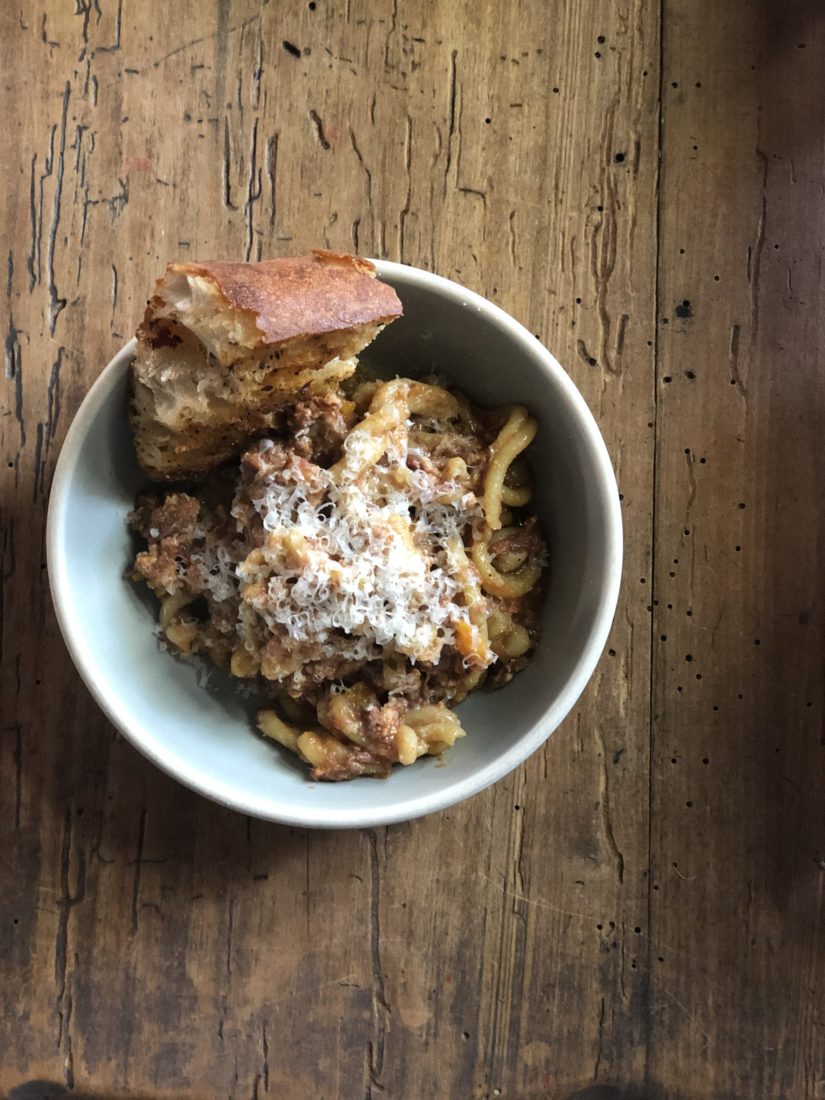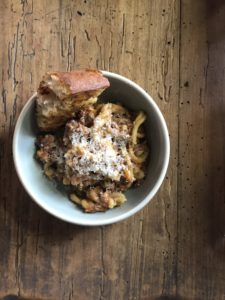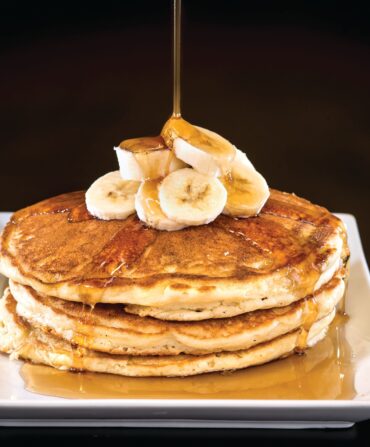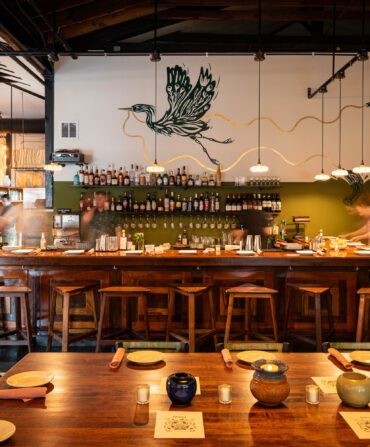There’s an affable femininity to Thalia, the new New Orleans restaurant by acclaimed chefs Kristen Essig and her partner/co-chef Michael Stoltzfus, who have owned and operated the nearby Coquette for a decade. At Coquette, diners find chandeliers, old brick, and mahogany spread across two floors of dining, while at Thalia, the design—from the physical space to the menu—is meant to be breezier, more affordable, and lower-key. The single room’s sunny, pale-yellow walls extend 20-plus feet up to a lofty ceiling, the barstools have lavender metal legs, and large, glittery folk art by local artist Devin de Wulf occupies a prominent position. After a delay in July for Hurricane Barry, which mercifully caused less damage than feared, the restaurant is finally set to open on Tuesday, August 6.

Photo: Courtesy of Thalia
Chef Kristen Essig at Thalia’s colorful entrance.
“We wanted something that felt great, and that was first-and-foremost for the community and the neighborhood,” says Essig, who will now most frequently be at the helm of Thalia, though both chefs plan to switch between their restaurants. The menu includes fun flourishes of Southern cuisine. Essig’s Blackened Catfish a la Veracruz is served with Louisiana long grain rice, and the Coca-Cola BBQ Shrimp comes garnished with rosemary, black pepper, and peanuts. Family-sized, shareable plates will the norm.
The building, like most in New Orleans, has a varied history. It was a boarding house and a barroom. But its most infamous tenant, from the 1930s to the ’60s, was the Shamrock Tavern. “This was one of the last segregated bars in New Orleans,” Essig says, pointing out two, rough-wood support beams. They look stark against the restaurant’s colorful palette. “Those posts held the wall that separated the black diners from the white diners during the time of segregation,” she says. “We do not want to cover these beams, or paint them, or change them in any way. We want to drive that story of what used to be and of how far we’ve come.”
Eager to bring brighter days to the space, Essig and Stoltzfus focused on creating a vibe that is intentionally family-friendly and accessible in price point (dinner entrees from $18), as well as entirely accessible. “Both our restaurants are ADA compliant,” Essig says, “and we had our tables built in Thalia specifically so that someone in a wheelchair can sit anywhere.”
A second-but-equal focus is to significantly lower the environmental impact of food waste in both of their restaurants. “I do not believe it would be possible for us to truly be a zero-waste restaurant,” Essig continues, “but we are a 40-seat space, rather than our 120 seats at Coquette. That smaller footprint allows us to lower the cost on everything and to use every single thing that we buy. We built the menu for Thalia around the trimmings from Coquette. One example is our short rib. It’s cured for 24 hours and smoked over pecan wood and braised. We will be taking the scraps and trimmings from that preparation at Coquette that previously would have been tossed, and we are grinding them for our Bolognese sauce. It’s then folded with pureed chicken liver.”

Photo: Courtesy of Thalia
The house bolognese.
The house Bolognese recipe is one she’s developed over time, in her own home, and for Garden & Gun, she made a simpler-at-home substitution of ground beef instead of the braised short rib. She’s fond of cooking this recipe for loved ones. It makes a much more thoughtful gift than a bottle of wine, and Essig always has small batches waiting in her freezer. The sauce is rustic, hearty, comforting, and caloric. At Thalia, she serves it over a house-made gemelli.
“It’s perfect atop pasta, but you can also serve it with rice with an egg or over spätzle,” she offers. “You could certainly put this on top of nachos. It’s fantastic to batch in large quantities,” she says, “because it freezes so well. You can then take portions over when someone has a new baby or has lost a loved one. It’s comfort food at its finest, and I hope it’s going to become a favorite at Thalia for our regulars.”









